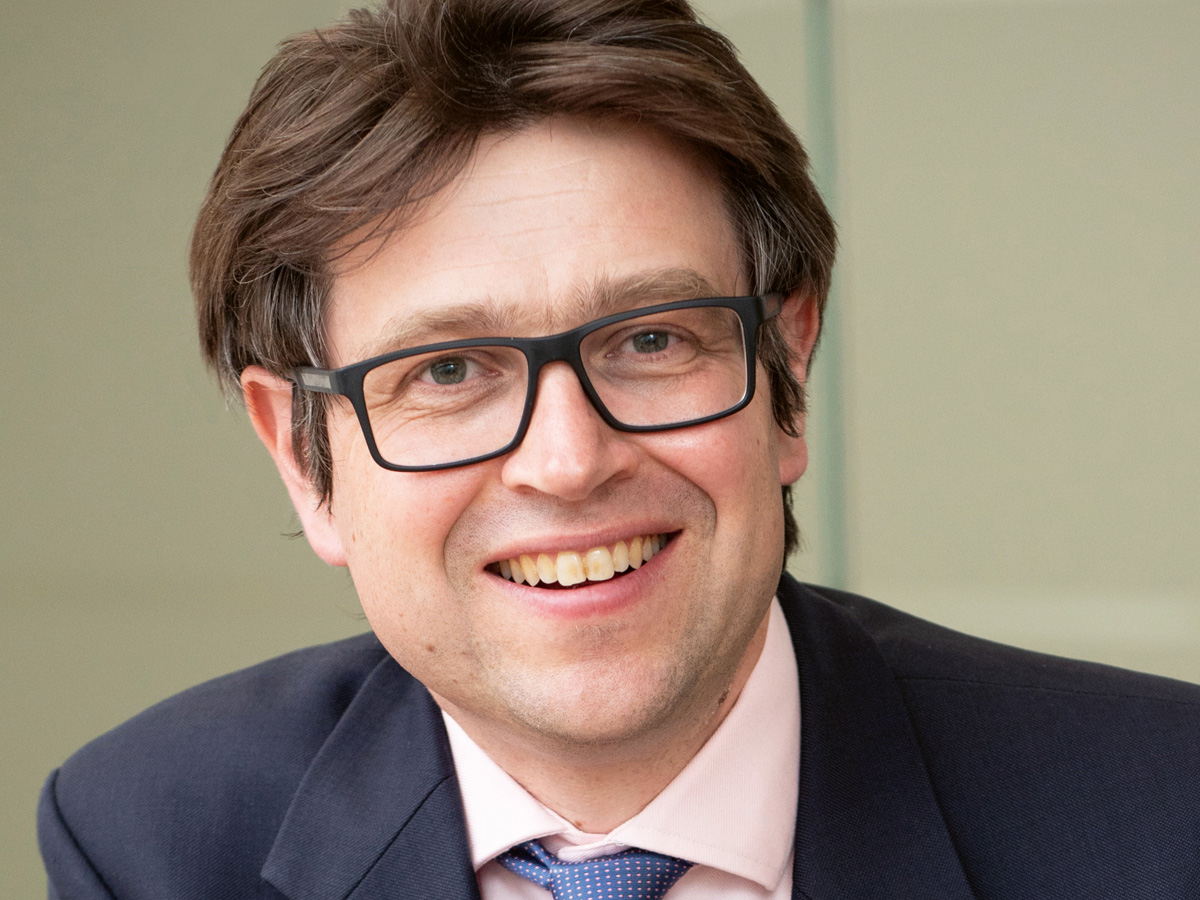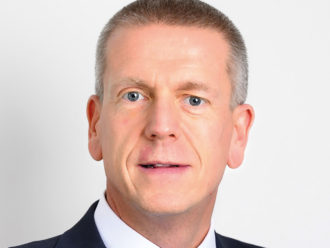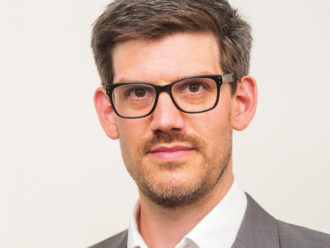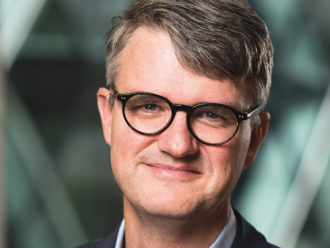Richard Tomlinson, chief investment officer of Local Pensions Partnership Investments (LPPI), tells Andrew Holt about stepping into the boss’ chair, lessons from Covid and what he believes is the ultimate strategic asset class.
You have been sitting in the CIO’s chair for 16 months now. What have been the biggest challenges you have faced so far?
After becoming CIO, I spent 10 days in the office before we were sent home to work. That in it itself was fairly challenging.
We had to start thinking about how we would adapt to the Covid world: how do we operate? How do we maintain the culture? How do we communicate? How do we work remotely? Do we need to change anything or just keep going?
It was a huge challenge but we got through it. Beyond that, it was the longer- term stuff about how we evolve as an organisation and move on in our journey. The reality is that the world, people, organisations and markets are dynamic – everything is changing. There is always the temptation to make your mark like a 100-day plan undertaken by the US president and throwaway what has gone before.
For me, it was a case of evolution – a continuation of where we have been on our journey. We made some subtle tweaks, but not wholesale changes.
Although you took over as CIO last year you have worked for LPP Investments since 2017. Did that help when making these decisions?
Absolutely. If I came in cold, it would have been an absolute nightmare. The continuity was critical because of what happened with Covid.
It also helped that Chris [Rule] moved from CIO to chief executive. We have a good understanding of how we both work and think about things as well as having a clear understanding of who does what. Although there is a difference in managing a third of the investment team and directly managing the whole thing, people started reporting to me who had previously been my peers.
How are you managing LPPI’s eight in-house funds?
To fulfill the pooling agenda, we had to pool client assets and integrate them into a common investment platform. You could do that by putting the assets into a multi-asset fund – but you lose the ability to asset allocate for clients. The route we went for was defined by asset class: global equities, credit, fixed income, infrastructure, real estate, diversified strategies, absolute return and private equity.
We decided to go down the traditional, vertical asset class definitions route on a global basis. It is easy to define and to communicate.
We run each of those asset class verticals as standalone funds, but they are designed as a coherent whole for client pension schemes. They are designed to be build- ing blocks, so clients can pick and choose to build a coherent portfolio.
The big game changer is net zero, ESG and responsible investing.
You have made a big commitment to real estate. What is the attraction here?
The portfolios we run are different from defined benefit (DB) corporate pension schemes, which is more of a risk management, meet the liabilities type approach. Whereas we run a portfolio for return, and the objective is also to minimise future contributions because they come straight out of the employer/state purse.
There are two things we have to achieve for clients: one, to build long-term asset value and pay pensions in the future. The second is paying pensions today. So, we build portfolios for that matrix and each of the asset classes we have play a role in that.
Real estate is useful because you have a degree of inflation linkage and so these are assets that, hopefully, will keep pace with inflation to provide that long-term capital bucket for paying pensions. Take commercial real estate. You tend to have inflation in there, it is a real asset, so if inflation rises it should maintain its real value and is relatively yieldy, so you are taking income to pay pensions today. It is an asset that works well with stakeholders and clients like ours.
And like most investors, we are trying to do this in the most efficient way. With real estate you have a home bias towards it: because one, there are tax efficiencies, and two, you can go direct to the assets, so there are minimised costs and fees.
Our clients are only exposed to UK inflation, so owning UK assets that are genuinely exposed to UK dynamics is helpful. Whereas most stocks are global – the FTSE100 is not a barometer of the UK, it is a global index.
Other than real estate, are there other asset classes you find appealing?
To me, global equities is the ultimate strategic asset class. Whenever the world hits a problem, solutions tend to be found and they tend to involve printing money and borrowing money: things that tend to, in the long term, support the value of equities.
At the other end, the ultimate tactical asset class is credit. It is so complex with such banded outcomes. At certain points in time, you can look at pockets of credit and go “wow”. You essentially have high yield or equity-like returns with investment grade risk. No other asset class offers you that opportunity set, where risk and reward can be so skewed in your favour, as long as you can stomach some illiquidity, which we can.
You are focused on return seeking assets: how does this influence your investment approach?
I am, in my background, someone who very much manages and drives portfolio outcomes. On investment decision making, the reality is that you need to have a clear view of the long term. Looking beyond short-term bugs in the road is great from our point of view.
It also means that the framework we use to implement the portfolios, while we are risk aware, we are also pretty risk seeking as well. It means we can take that long-term perspective which is our major competitive advantage relative to other market participants. It does mean you have to be confident in the process oversight and thoughtful about how you build the portfolio.
What changes have you made to LPPI’s investments during your tenure?
We are not particularly high velocity in how we move the portfolio. The themes I am pressing on are a focus on fees, making sure we get value for money and hold- ing managers to account. Another issue I am pushing the team on, is to think more holistically about the portfolio.
Our clients want a top-down allocation and the investment teams are finding assets that fit within the mandate. What I am pressing to drive home more is that top-down piece, and how we look at the portfolio holistically: thinking about the role more precisely of each asset group and making sure that we find the most efficient way of expressing an exposure within the portfolio.
To me, global equities is the ultimate strategic asset class.
Your remit is to reduce pension deficits and improve investment returns, which has borne fruit with around £47m of savings for your clients since inception, while not foregoing returns. How did you achieve this?
We run two blocks of capital in-house: one, our global equity fund, half of which is managed internally, while in the external part we drive the fees down.
The other is core infrastructure – the assets of which are stable and long term. The second element is using our scale to efficiently implement and have relationships with managers where we can negotiate the basis points we pay.
How do you see the economic picture shaping up in the next 12 months and how will it impact your investment approach?
We are pretty long term and do not try to be too opportunistic. We do not take big directional calls. Looking at the next year, I heard a quote from Lee Cooperman, chief executive of US-based Omega Advisors, who said: “I am a fully invested bear,” which is a great way of framing it. It is hard to see, aside from if the vaccines do not work, things not getting better.
We see an acceleration in economic activity. At the moment it is hard not to have optimism. We are not aggressively investing at this point of time. The area I do see us having more is in the credit sphere. If things do dislocate, we have more capital to employ to make of those opportunities.
Are you concerned with a taper tantrum or a rise in inflation?
If you are trading in fixed income and get on the wrong side of that – that is a big deal. For us, what can disrupt our portfolios are the bigger risks: the value of real estate, the value of infrastructure, the value of long-dated growth equities. If long-term interest rates rise the value of those assets could be hit. That is the risk we see.
What investment objectives do you have going forward and how will that shape your investment philosophy?
This is a continuation of the industrialisation of what we do: building in more process, building in more analytics, systems and data and the ability to do that better. The big game changer is net zero, ESG and responsible investing.
We are, like everybody else, deeply embedded in net zero and see that being pulled into the core portfolio management process. It is already there, but it is changing how we communicate with clients. And getting that better view of the portfolio holistically – making it coherent.
We have also updated our investment beliefs recently with more explicit ESG and responsible investing components. It is now integral to how we think about our investment process.
On what criteria would you like to be assessed as a CIO?
That I have stewarded the team well through my tenure and that we are improving, whether it is culture, systems, process and capabilities. I have created a team plan, measured what mattered and put that to the team with objectives and results. It helps us focus.
The idea is that we build a tier one asset owner-asset manager organisation. So, our investment team is viewed as a professional, credible, solid team who can be relied upon and held in high regard.




